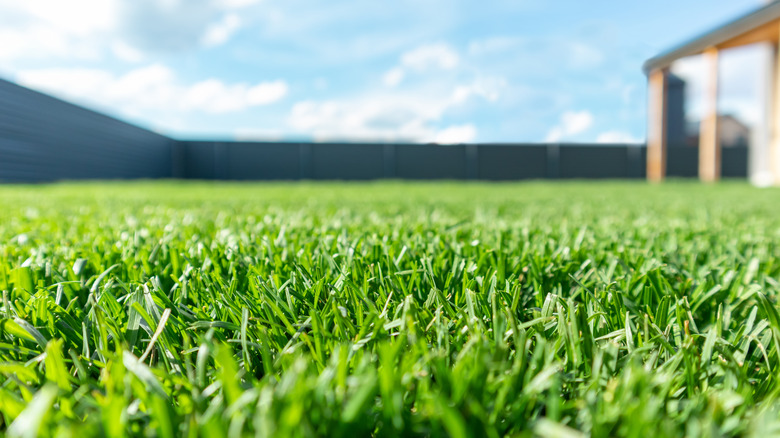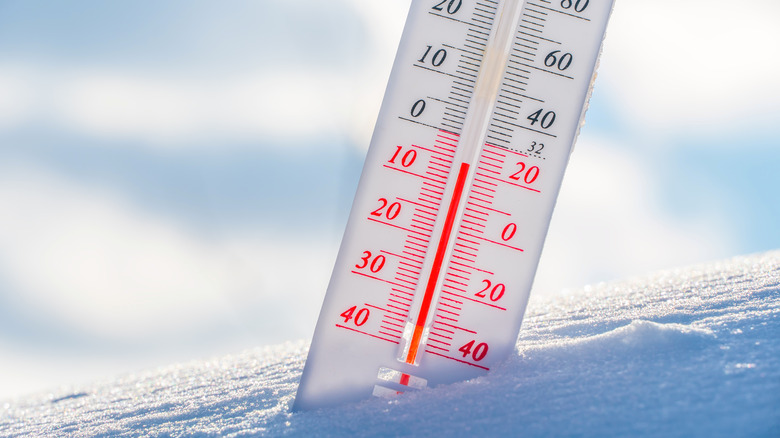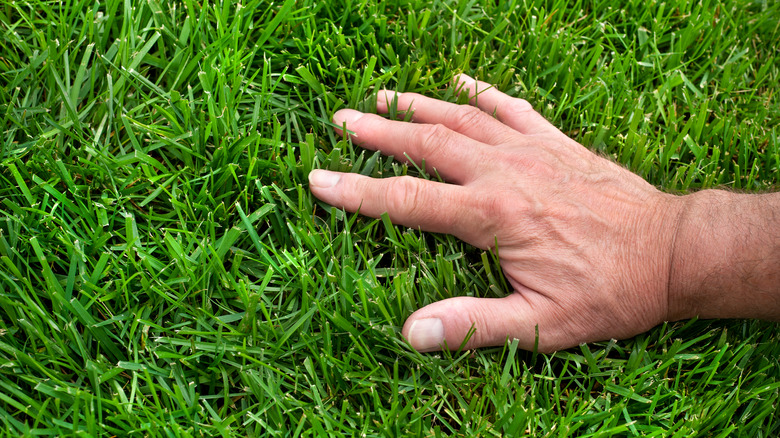When Is The Best Time To Apply Weed And Feed?
Weed and feed is a common lawn chemical that is used widely across suburban America. Home and garden owners rely on the application of these types of products to ensure that their lawn is always healthy and green throughout the year.
However, choosing the best time to apply a weed and feed solution is dependent on a number of factors, and can change across different areas of the U.S. For instance, University of Florida suggests that this additive to the lawn and soil should be applied from February 15th onward for homeowners in South and Central Florida, and after the 1st of March for those living in North Florida. This corresponds roughly with regionally anticipated last frost dates, allowing your lawn to begin to come back alive after dormancy from the winter chill.
Earth Works reports that a good rule of thumb — for those seeking a more proactive approach to fertilizer application — is to wait until the grass begins to perk up and regain a vibrant green shade. This results in a longer wait time, extending into the spring, but will allow for the full effect of your fertilizer and weed killer mix. Determining the best time to apply weed and feed is all about understanding your local area, whether you go by a calendar-driven approach or the visual cues that your lawn provides.
Follow average temperature reports
One good approach to the application of weed and feed is to take your cue from the average temperature reports (either daily or weekly) as the weather begins to take a turn towards the typical springtime thaw. Earth Works also reports that a combination of calendar-specific information, and an on-the-ground assessment of the ongoing temperature fluctuations, can help you make the decision as to when you should apply a new covering of weed and feed to the lawn.
Warmer weather is a key ingredient in getting this application correct, so each year will require its own common-sense approach when applying fertilizer and weed killer. According to Earth Works, when you add these chemicals to a lawn too early they will actually promote the opposite of your intended purpose. In colder weather, the nitrogen content of the fertilizer will help propel weed growth rather than stamp it out. This means that you should approach any recommended timeline for fertilizer use as a guideline rather than a definitive statement.
Use a suitable weed and feed mixture
Another important consideration is whether you are using post-emergent or pre-emergent weed and feed. The Yard and Garden suggests that using pre-emergent options should actually be done during the colder months to help stifle winter root growth of weeds, and support the dormant stage health of your grass. In locations that have less than optimal soil quality, you may want to use two rounds of weed and feed (once in the autumn or winter months and once again with post-emergent formulations in the spring) rather than one single application.
Bob Vila reports that grass varieties in the United States are typically segmented into two general categories: Warm season and cool season. Broadly speaking, these correspond with geographic regions of the country based on climate. It's important to understand what type of weed and feed works best for your variety of grass since a fertilizer mix that's specifically tailored to the requirements of your lawn will always perform better than one that isn't.
Another reason to follow the recommendations of your specific area is the localization of particular weed species. Just like every lawn will have its own fertilizer requirements, killing off weeds follows the same pattern, with unique variants existing across the span of the United States, explains The Spruce.


